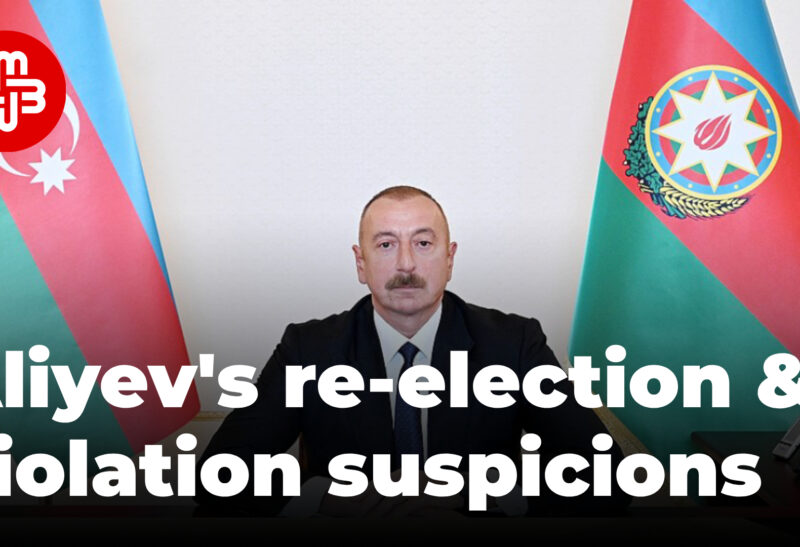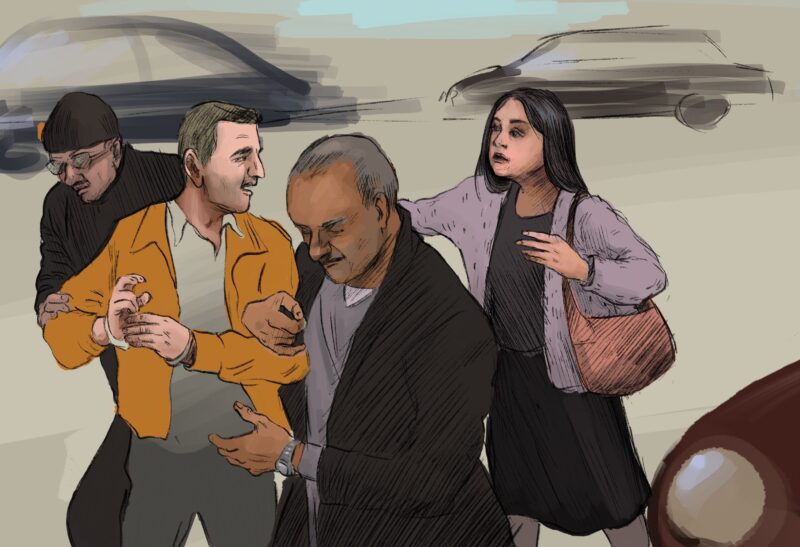According to official data, about a million Azerbaijanis were displaced during military operations in the 1990s. Initially, tent camps were set up for the homeless as a result of the war. Then, settlements and residential complexes began to be built for the displaced. However, many still live in semi-detached buildings of former dormitories, schools, kindergartens, and even in carriages, and have been waiting in line for many years to own a normal apartment. Paradoxically, Azerbaijan taking back control in their regions of origin in 2020 did not result in their hopes that their long-standing housing problems would soon be resolved becoming a reality.
The war between Azerbaijan and Armenia over Karabakh ended on November 9, 2020. According to the agreement signed between the two countries with the mediation of Russia, most of Nagorno-Karabakh, including the surrounding areas, came under the control of Azerbaijan.
According to the same agreement, refugees and IDPs who left the occupied territories during the military operations in the 1990s can now return to their native lands. When the lands fell again under Azerbaijani control during the 44 day-long war, many of those who had had to flee proclaimed happily “I am no longer an IDP!”
President Ilham Aliyev also confirmed at an online meeting on 6 January 2021 that IDPs registered in areas now under Azerbaijani control had indeed had their status revoked. He added that rehabilitation work had begun in the area so that former IDPs can return to their lands, and the return process will be voluntary, but in turn homes promised to those people living in dormitories would no longer be given to them.
"I know that they have been waiting for these homes for many years, but now the land has been liberated," he said. According to him, “it therefore does not make sense to place former IDPs in Baku, Ganja and Sumgait. It is a very right decision to give the houses intended for them to the families of martyrs.”
In turn, the Labor and Social Protection Ministry’s speaker Vusal Nasirli has indicated that process to give the Labor and Social Protection Ministry authority over the homes built for IDPs from the Affairs of Refugees and Internally Displaced Persons has
begun
.

"We live in a narrow room divided into three parts by a curtain"
Thus, people who have just begun to live a normal life after many years must now be ready to move again at any time. Most likely, the return of former IDPs to their native lands will not be possible soon – the areas are still strewn with mines and uninhabitable. This means that hundreds of thousands of people are doomed to continue to live in harsh conditions for another 3-5 years.
"I have two sons and a daughter. My sons are married and have two children each. Ten people – nine after my husband passed away – live in a cramped room. We separate it with a curtain to make three small rooms, and we don't have gas,” said Maryam Mammadova, an IDP from Aghdam.
Like most of her compatriots, Maryam Muallim was forced to leave her home with her family in 1993, when the Aghdam region was occupied by Armenian forces. The family lived in the villages near Aghdam for three years, hoping to return soon. In 1995, they came to Baku and have been living in a dormitory ever since. When she called the Refugee Commission and asked if they wanted to return, Maryam told the teacher and her sons that they wanted to return. But they do not know when this will be possible.

"We were registered for the house and were supposed to move in December. When the war broke out, our neighbors and us decided to give up those homes to the families of martyrs and veterans, and we wanted to return to our lands. But now we do not know how long it will take, at least for two or three years. We share the water is common, the toilet, and on Sundays there is a queue to the toilet. It is very difficult. It would be good if they relocated us, at least temporarily. Then, when we are allowed to return, we will return. We are three families in a small place, if at least one would be relocated it would help, Maryam says.
Valida Yusifova, an IDP from Fuzuli, was supposed to move to a new apartment with her family in December last year, but this will no longer be the case She and her husband will continue living in a dormitory until they return to their home village.
"I have been in the dormitory since August 15, 1994. Now I live with my husband, my son doesn't stay here because he says it’s too stuffy so he rents a house. When we came here, there was only one masonry, so we built the room ourselves. There was no gas from the beginning and only one light works. We use an electric stove. It is good that the state pays for our utilities. Again, we have created good and bad conditions for ourselves, our bathrooms and toilets are separate. The situation on the upper floors is very bad”, said Valida Yusifova.
Ms. Valida was one of those who answered "yes" to the question of the refugee committee on whether they want to return: "We do not have a house here, why not return? Many want to return. Who wants to stay in this situation?! But I think it will take at least three to four, at most five to seven years to return. After enduring 27 years, we will endure five or six years. "
"We’ll get there only to be buried…"
Privileges provided by the state to IDPs such as houses built for them or other accommodation are all temporary and are not transferred to their names. Now that the root causes of IDPs have been eliminated through Azerbaijan’s military victory in the fall, they are no longer considered IDPs, since they can hypothetically return. However, according to lawyer Khalid Bagirov, this is uncertain, because they cannot return yet.
"The state can abolish the IDP status of those people only after eliminating all the problems. Until then, the abolition of the status of IDPs is not considered legally correct”, said Khalid Bagirov.
On the other hand, the president's statement that "houses for IDPs will be built only in liberated areas" requires clarification. According to human rights activist Anar Mammadli, the wishes of IDPs should be taken into consideration on the principle of public participation.

"It would be good to establish a state committee on reintegration instead of a committee on IDPs, and to resolve issues related to the reconstruction of the regions with the participation of citizens and specialists. We learn of changes by chance from the statements of the president or some official. However, those places must be restored in such a way that people are willing to live there”, said Anar Mammadli.
According to him, the steps taken by the government are too hasty and not planned. The government has not yet said when the IDPs will return to Karabakh, and has only advised not to return to the liberated lands. Back in November last year, Idris Ismayilov, chief of staff of the National Agency for Mine Action (ANAMA), told reporters that more than 80% of the territories liberated from Armenian occupation in Karabakh are still considered dangerous due to the large number of minefields. According to him, it will take three to five years to clear the area of mines.
"If normal living conditions and socio-economic environment are not created there for the next ten years, it is not the right approach to tell them today, 'You will not be given an apartment here, return to your regions,'" Anar Mammadli said.
Meanwhile, Naila Zamanova, an IDP living in a dilapidated dormitory building, is asking the government to provide them with "a small apartment" before returning to their homeland :
"How long will it take?" Two or three years? Maybe we will never see those days and we will die. After all our suffering we have suffered here, We’ll get there only to be buried…”
According to official
statistics
, refugees and IDPs make up 1.2 million, or 12.4% of the population of the Republic of Azerbaijan.
With the support of the Russian Language News Exchange



